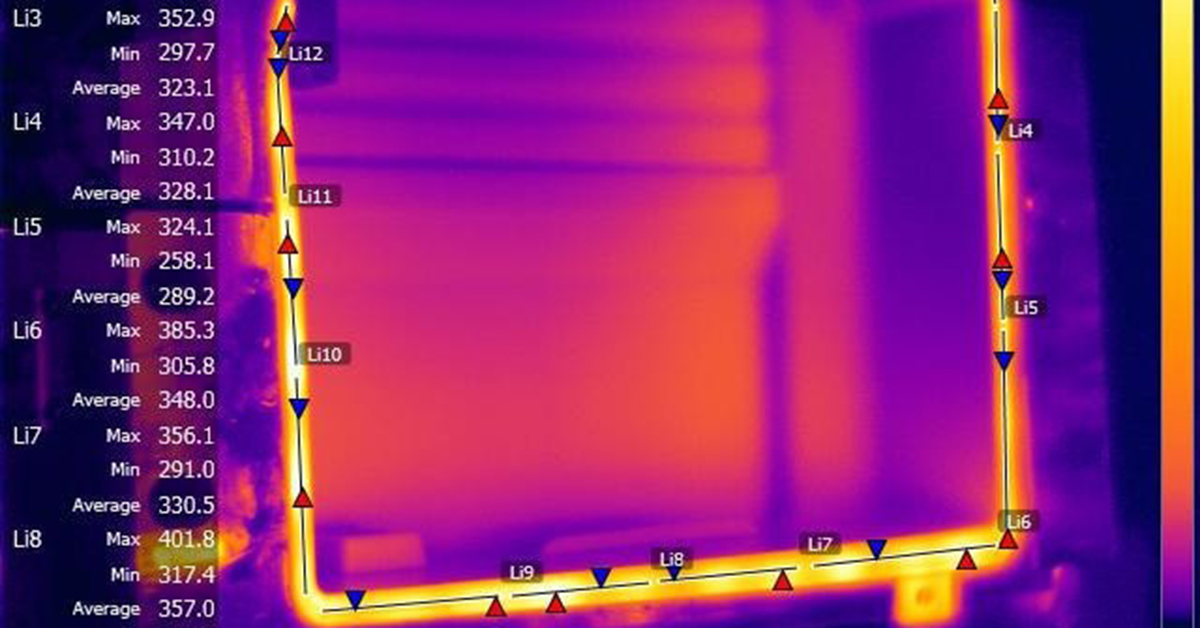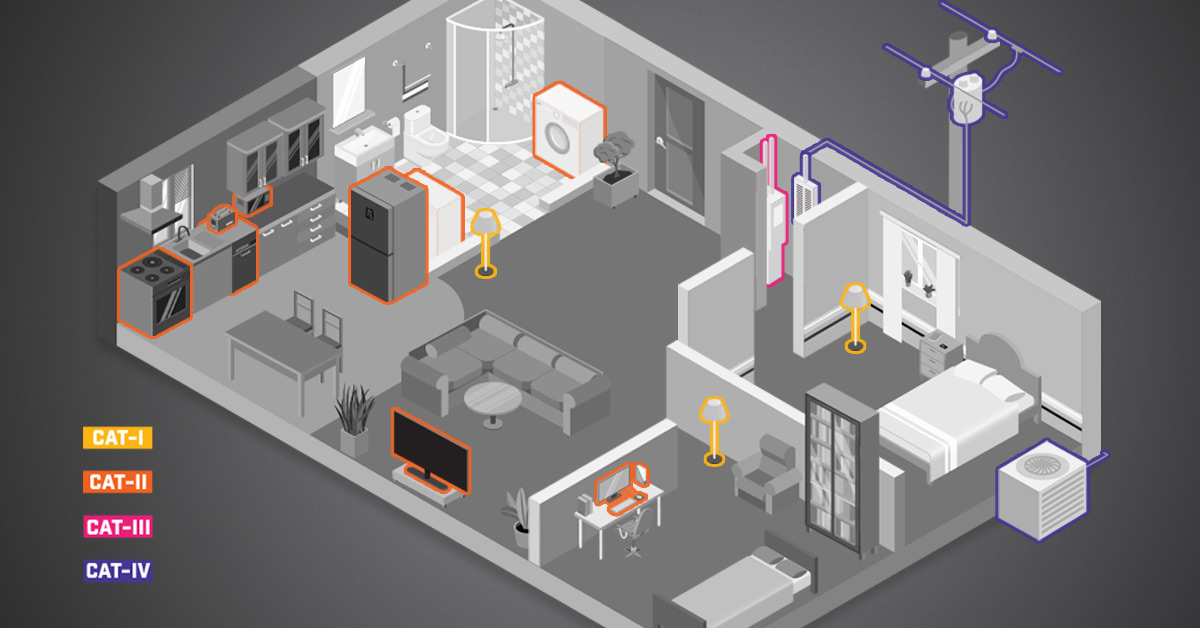Insulation of Commercial Walk-in Freezers Checked With Thermal Imaging
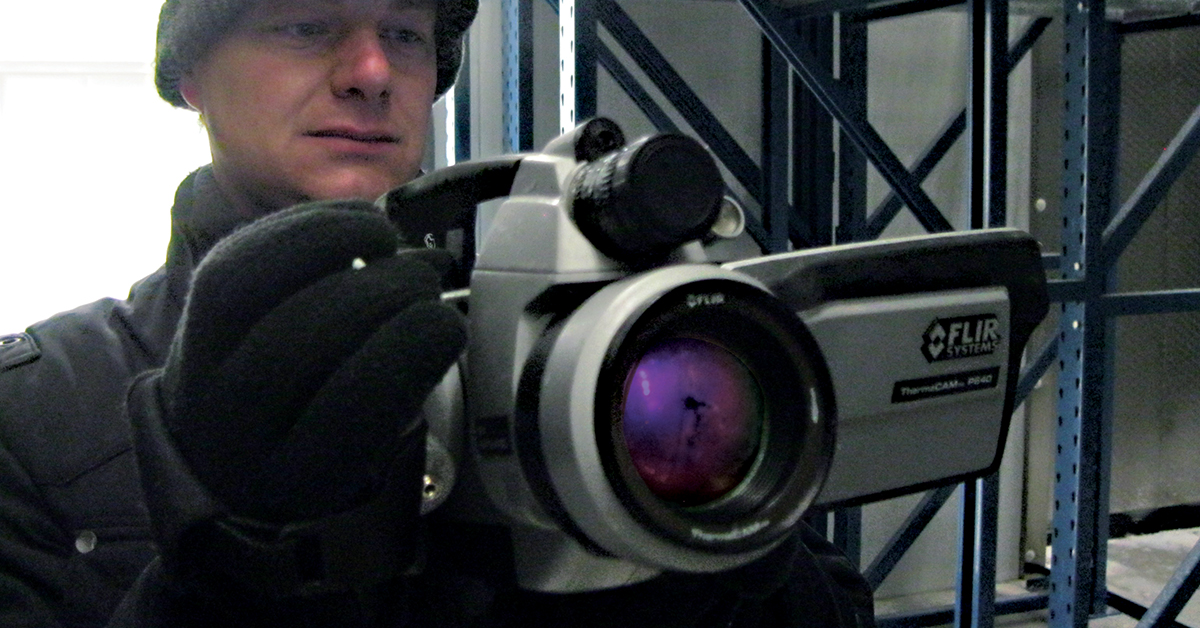
Enterprises that need to store large amounts of goods at temperatures well below the freezing point of water often install large walk in freezers on their premises. These large freezers are capable of keeping whole rooms full of these goods, usually foodstuffs, at very low temperatures. There is just one downside: cooling requires a lot of energy. It is therefore very important that no outside heat leaks in. To make sure that the freezer's insulation is working properly, thermographers inspect the insulation material with a thermal imaging camera.
"In essence inspecting walk in freezers, cold rooms and other types of large commercial refrigeration units is in essence very similar to building insulation inspections", explains Dennis van Est, thermographer at the Uden, Netherlands, based Thermografisch en Adviesbureau Uden. "The only difference is the direction of the heat. With building insulation inspections we generally try to detect heat leaking from the inside of the building to the outside air, but with refrigeration units we want to detect heat leaking inwards. But the mechanism of heat leakage is just the same."
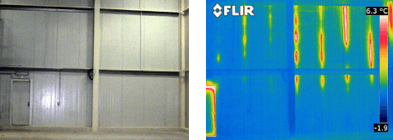
The thermography consultant is called out to Leeuwarden to inspect two walk in freezers. "If there is any heat leakage this can cause a huge unnecessary expenditure on energy bills" says Van Est. "Detecting these heat leaks in an early stage allows the owner to fix the insulation defects, preventing soaring energy bills. With the energy prices continually rising, the demand for walk in refrigerator and freezer inspections is also growing."
Heat bridges
Van Est finds insulation problems in many of the walk in freezers and cold rooms he is hired to inspect. "This particular freezer which I'm inspecting at the moment seems to be very well insulated, but you'd be surprised to see how often newly built refrigeration units have a faulty construction. Sometimes the joints between the insulation panels are not protected properly, creating heat bridges. This can cause a lot of unnecessary energy consumption. In other cases older units might develop insulation faults over time due to wear. In both scenarios the best way to detect these insulation defects is by using thermal imaging cameras. Other methods, like spot pyrometers and such, really are not an option with this type of inspection. It is simply too easy to miss problems that you can relatively easily detect using thermal imaging."
To Van Est the quality of the thermal imaging camera is crucial for these inspections. "You need high quality thermal images to be able to detect warmth bridges in the freezer insulation. The thermal sensitivity and accuracy are both very important, but to me the image resolution is also crucial. You need to be able to interpret what you see in the thermal image and if you are using a thermal imaging camera that produces thermal images at a resolution below the current industry standard of 640x480 pixels then you are missing a lot of information which you need in order to draw the right conclusions."
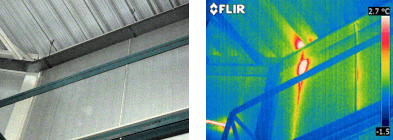
Excellent tool
Van Est and his team used a FLIR P640 for these inspections, a camera that is now out of production but has comparable capabilities to FLIR T-Series cameras like the FLIR T840 or FLIR T860.
The FLIR P640 thermal imaging camera was an excellent tool for these inspections, according to Van Est. "With an image resolution of 640x480, a thermal sensitivity of 30 mK (0.03 °C) and an accuracy of ± 2 °C or ± 2% of the reading the thermal images produced by the FLIR P640 thermal imaging camera are of exceptionally high quality. This thermal imaging camera model is also very user friendly. Especially if you compare it with the cameras of other manufacturers the image quality and user friendliness of the design are far superior. The ergonomic design is also very important to me because you need to prevent back aches and arm strain."
Another important thermal imaging camera feature for this particular application is the calibration range, says to Van Est. "The FLIR P640 thermal imaging camera is calibrated to a minimum temperature of -40 °C. This is very important to allow accurate temperature measurements. Most freezers are kept at a temperature between -20 °C and -30 °C. However, even at temperatures just below the official calibration range, such as some exceptionally cold freezers that cool down their contents to -50 °C or even -60 °C, the FLIR P640 thermal imaging camera is still quite capable of visualizing insulation leaks."
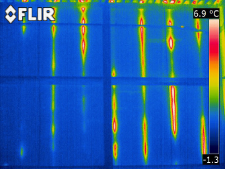
The importance of training
A good camera is just half of the solution, however. "Although the quality of the camera is extremely important, the knowledge and skill of the thermographer is just as important", says Ralf Grispen, commercial manager at Thermografisch en Adviesbureau Uden. "We therefore make sure that all of our inspectors have at least a level I thermography certificate from the FLIR Infrared Training Center (ITC) and preferably level II as well. For us this is one of the reasons why we chose FLIR: not only are the thermal imaging cameras of the highest quality; the accompanying training offered by the ITC is also very good."
"High quality thermal imaging cameras and good training come at a price, but they are definitely worth the money", concludes Van Est. "We have several FLIR cameras and they are used for a wide variety of applications, including inspections of building insulation, industrial maintenance inspections, HVAC systems, airplane composite materials water ingress and refrigeration units insulation inspections. In fact these cameras are almost constantly on the move from site to site."

